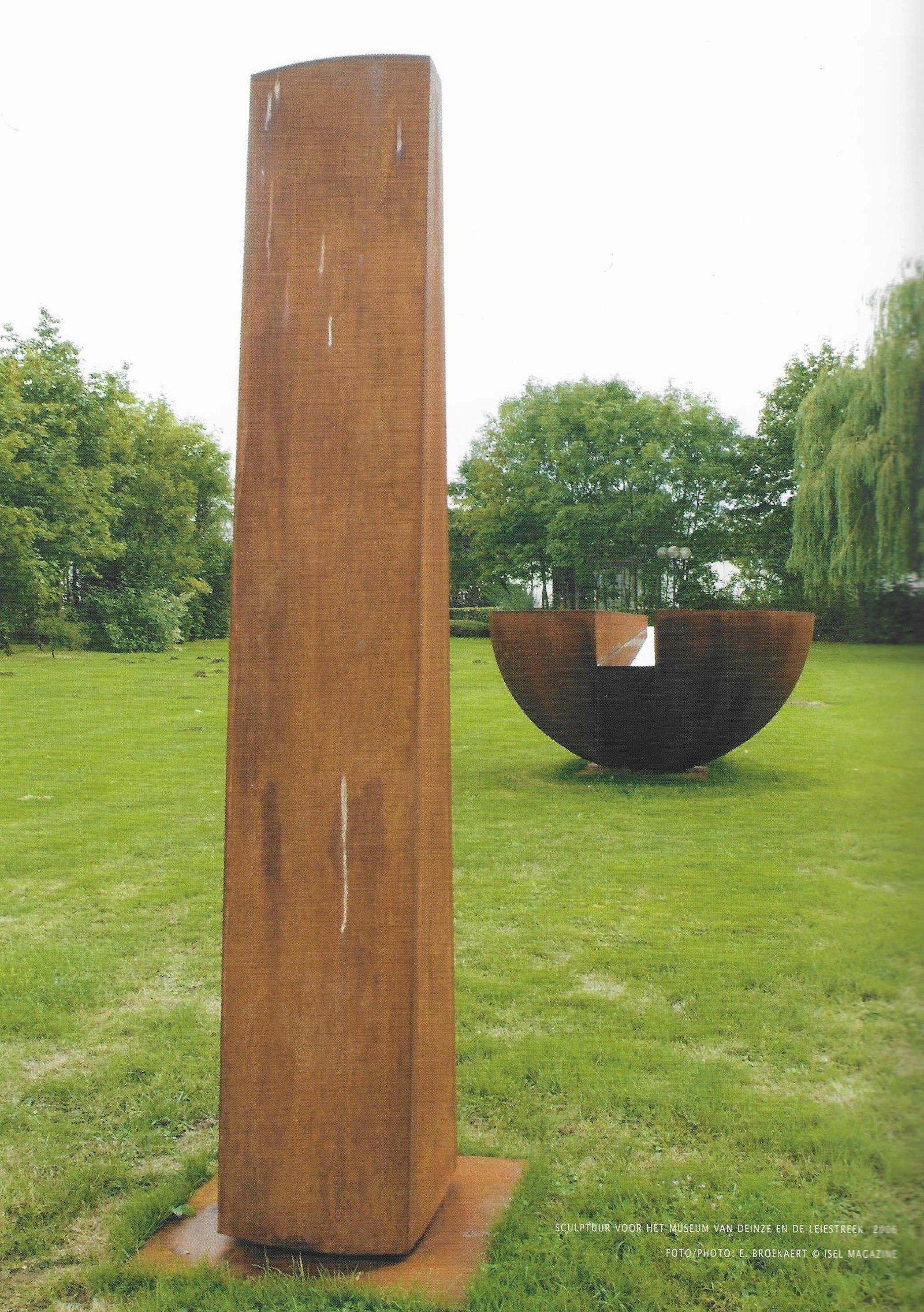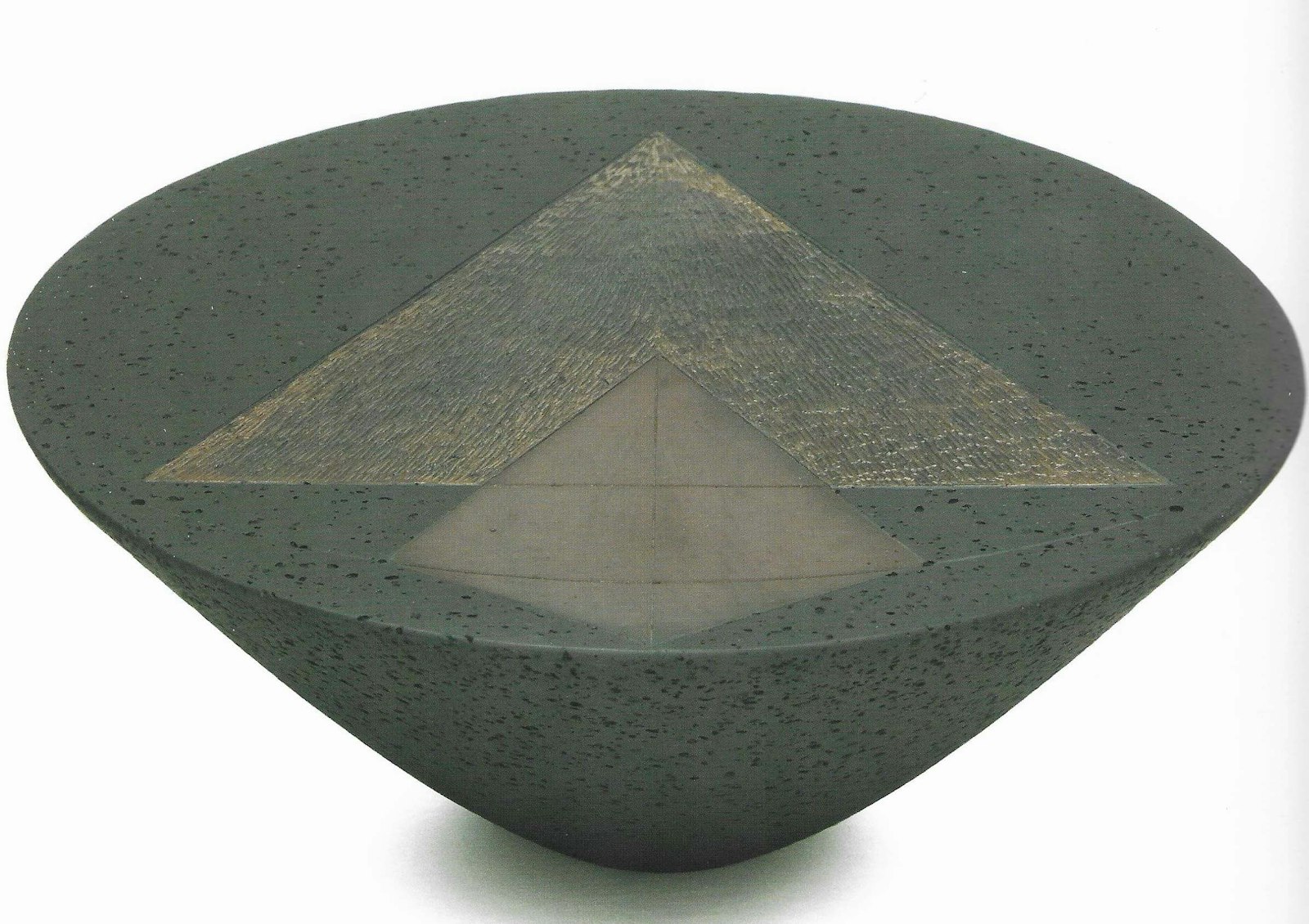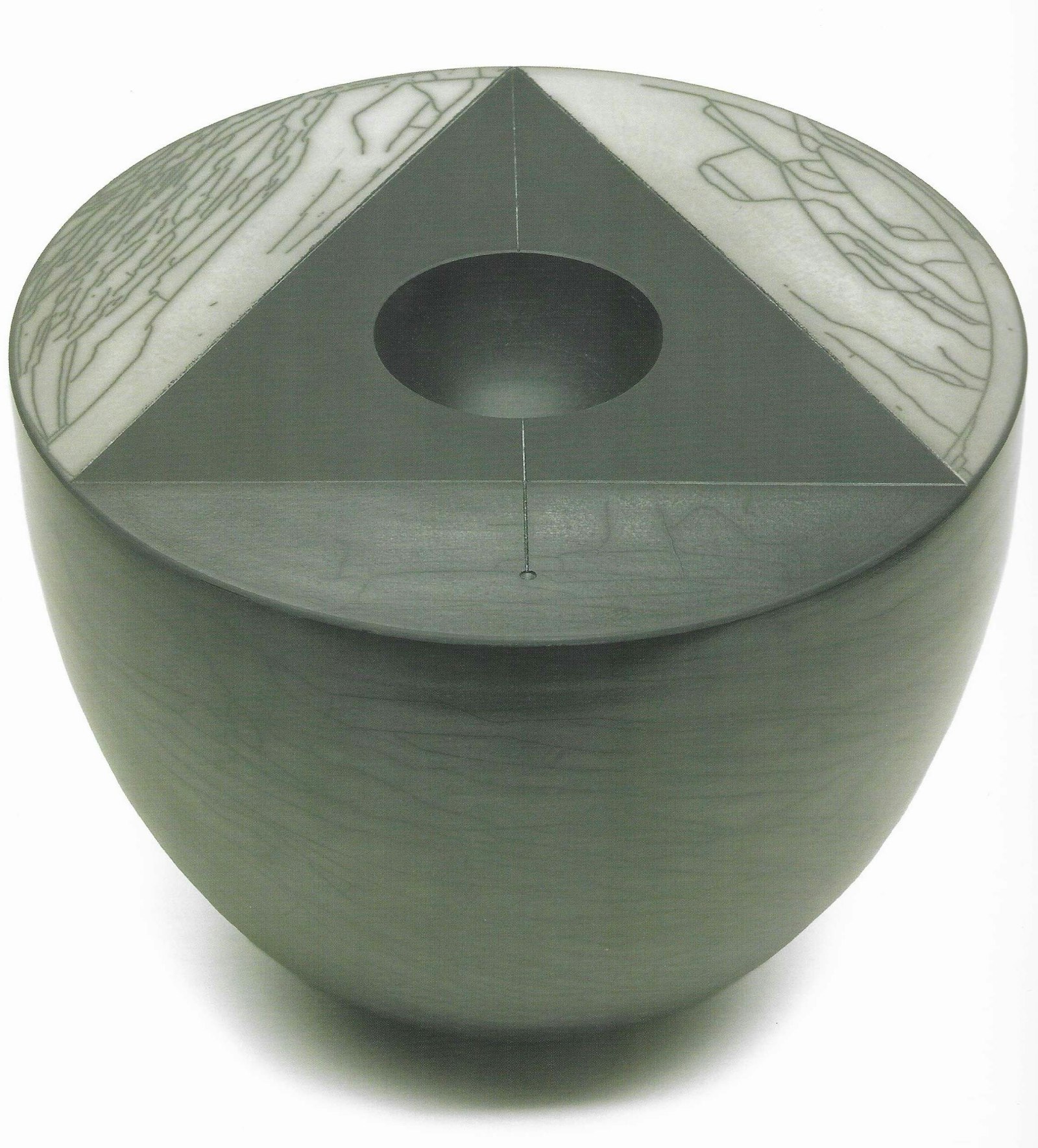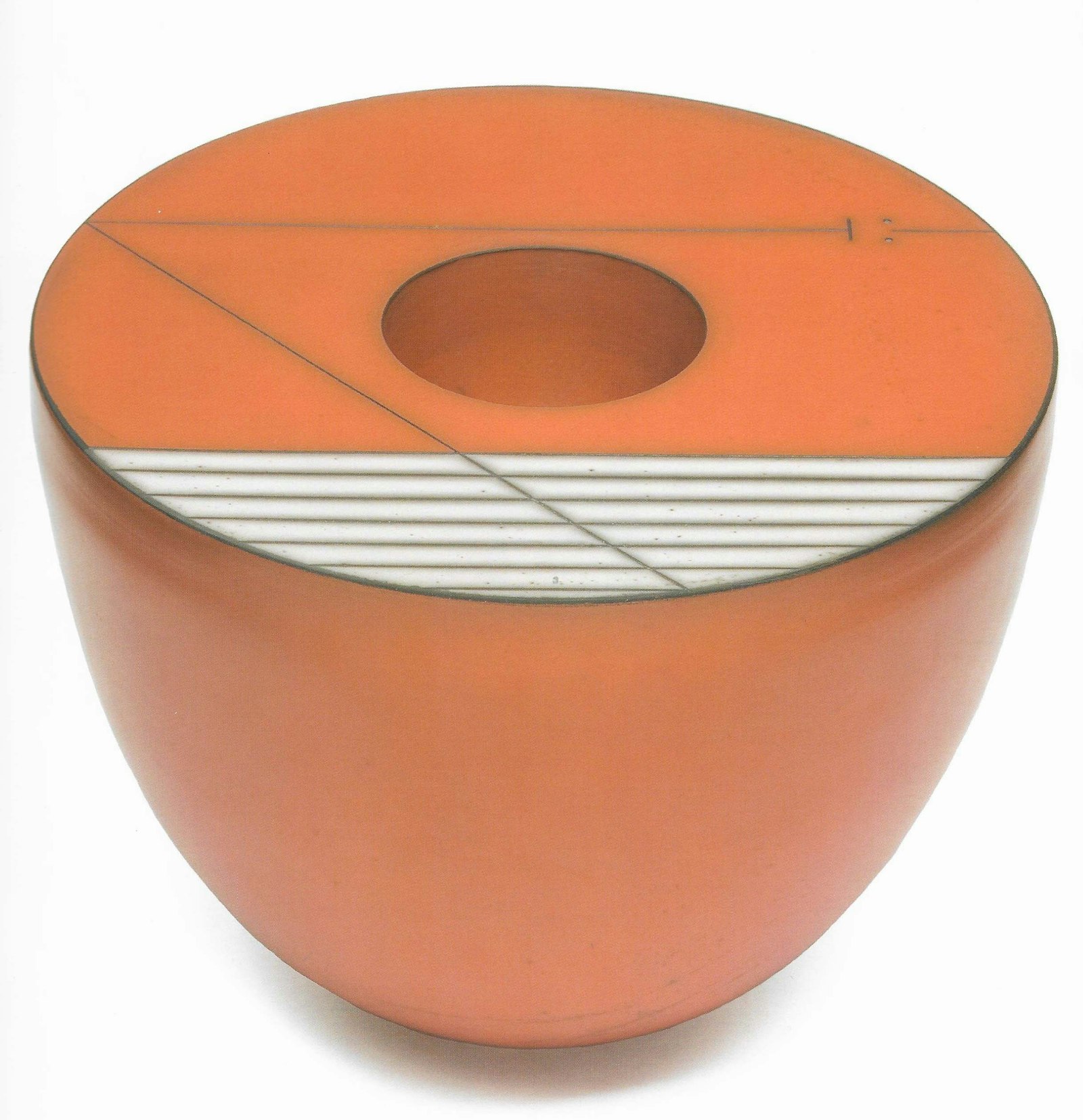de Velde
Tjok Dessauvage
In 1996, in the first book about Tjok Dessauvage, I published the text 'A poem in matter'.
A somewhat hermetic title, but one that still describes the feeling I get from his work. Not mystical thoughts, but thoughts about poetry, about beauty, about respect for tradition, and at the same time innovation, about technical virtuosity, about independence, about Magritte's 'Ceci n'est pas un pipe', and the famed surrealism of Belgian art. Things are, indeed, not at all what they appear to be. Tjok's pots are not pots, but they resemble them. You could call them 'pot structures', bodies which assume a very particular shape in space, the form of a milestone, those old conical, tapering Roman milestones.
Tjok started out as a potter. Born Jacques Dessauvage in 1948, he began studying ceramics at St. Lucas, Ghent, under Joost Maréchal (1911-1971), a pioneer among Belgian ceramicists, but '...a closed figure, highly acclaimed as a pioneer of modern ceramics, but who thought it better to leave students to it, rather than show them too much' (quote, Jan Walgrave, 1996). After Maréchal died, Jacques (now Tjok in the dialect of Ghent) left St. Lucas in 1972, and continued to apply himself to ceramics, regular everyday ceramics. He settled in Sint-Eloois-Winkel near Kortrijk, where he still lives to this day.
In 1979, Arnold Verhé, the man behind the Free Academy in Ghent, gave him his first exhibition and this is what got the ball rolling. In his early phase he worked in the very common oriental style, because the early ceramicists in that decade mostly took their inspiration from Asia — countries such as Korea, China and Japan. Antoine De Vinck (1924-1992) was one of the first to give ceramics a new look, via Pierre Caille (1912-1996), professor of Ceramics at La Cambre, in the middle of the last century, thereby setting an example for younger ceramicists. Little wonder then, that in his early works Tjok also drew on these especially rich traditions in ceramics. A gifted artist and technical virtuoso into the bargain, he went on to develop a new style all of his own. And so the double-walled pot was born. And this brought him fame. Taking the age-old archetypical Roman milestone as a metaphor, Tjok created many hundreds of these pots. The exhibition in Arnold's Art Gallery in 1979 marked the start of a career that would span the globe. He exhibited his work from Watou to Seoul, from Wakken to Paris, from Brussels to Tokyo, and many more places besides. Many private collectors and prestigious museums have acquired examples of his work.
The nice thing about this is that he remained true to his home region, for his curriculum contains countless galleries in West Flanders.
In 1988, Tjok became a member of the prestigious 'International Academy of Ceramics', in 1992 he won the Inax Design Prize in Japan, and in 1993 the Premix Faenza. In 1995 he received the Henry van de Velde Award for Best Product. And, I dare say, for most beautiful product. Over the years he has also taught many workshops in Europe and Japan.
In the late 1990s, he took up sculpture. He usually creates these monumental translations of his ceramic work in other materials, such as metal and stone. Recently, he has even developed polyester prototypes, ultimately to be cast in bronze. The city of Athens acquired one such monumental work in metal, to mark its 2004 Olympic Games, and erected it in the Olympic Park at Amaroussion.
To get back to the title, I would like to say that his work is a linking of poems in ceramics. They look like petrified haikus, for they bear close resemblance in shape, yet are all different. The most varied images or suggestions of images appear on the smooth surfaces. The work that won him the 'van de Velde Award' in 1995, 'Ruimtespiegel', was a top work in 'Terra Sigillata', for example. Terra Sigillata is an old Roman technique used on luxury dinnerware, which, through a process of sedimentation in clay solution, creates a particularly shiny surface. It comes in red, through oxidation, or metallic black, through reduction. This technique is Tjok's preferred means of expression.
Before then, he had experimented with all kinds of alternatives in clay, such as coffee grit, pearlite and flax. He also tried other techniques, such as raku and smoke firing. The smooth, beautiful, monochrome, shiny surface, which I particularly like in his darker, black fired works, reacts like delicate skin. Touch an object like this and you leave traces. When your skin brushes the sculpture's skin, however lightly, it always leaves something behind. Another work that characterised his evolution was the 'Dagboek van een houtworm' [Diary of a woodworm]. To quote Marc Ruyters: 'Dessauvage made an impression of the trail a woodworm leaves behind on a piece of wood, and transferred this to the surface of the pot'. Says the artist: 'All of the woodworm's movements are recorded in that impression, and they literally describe its whole life: when the worm eats, it moves. When it moves, it eats. The image refers to a computer chip, the channel structure is a magnificent poem about 'doing' and 'living'.' (Marc Ruyters, Ons Erfdeel [Our Heritage], issue 1, 1996).
In his vision it is also a symbol of quiet destruction, invisible destruction from the inside out. You see not what you see.
In his career he has come into contact with a great many fascinating people, but he is still particularly grateful to Arnold Verhé and remembers José Vermeersch (1922-1997) with sadness. Verhé gave him his first exhibition. Tjok admired Vermeersch for his iron constitution, his indomitable creativity, his enjoyment of life, food and drink, and his indefatigable love of work. He also experienced at first hand the legendary hospitality of his wife Diane. One of the best times was building a field kiln together, in which Vermeersch fired his tri-coloured sculptures.
Above all, however, Tjok tells us his career would not have been possible without his partner, Renny Vanlerberghe, behind him.
'Tjok's pot structures appeal very strongly to our desire for beauty,' I wrote in the book of 1996. 'Not just an essential beauty, intrinsic and spiritual, but also physical, as one might find in an ideal lover.'
And since then, I actually haven't changed my mind.




